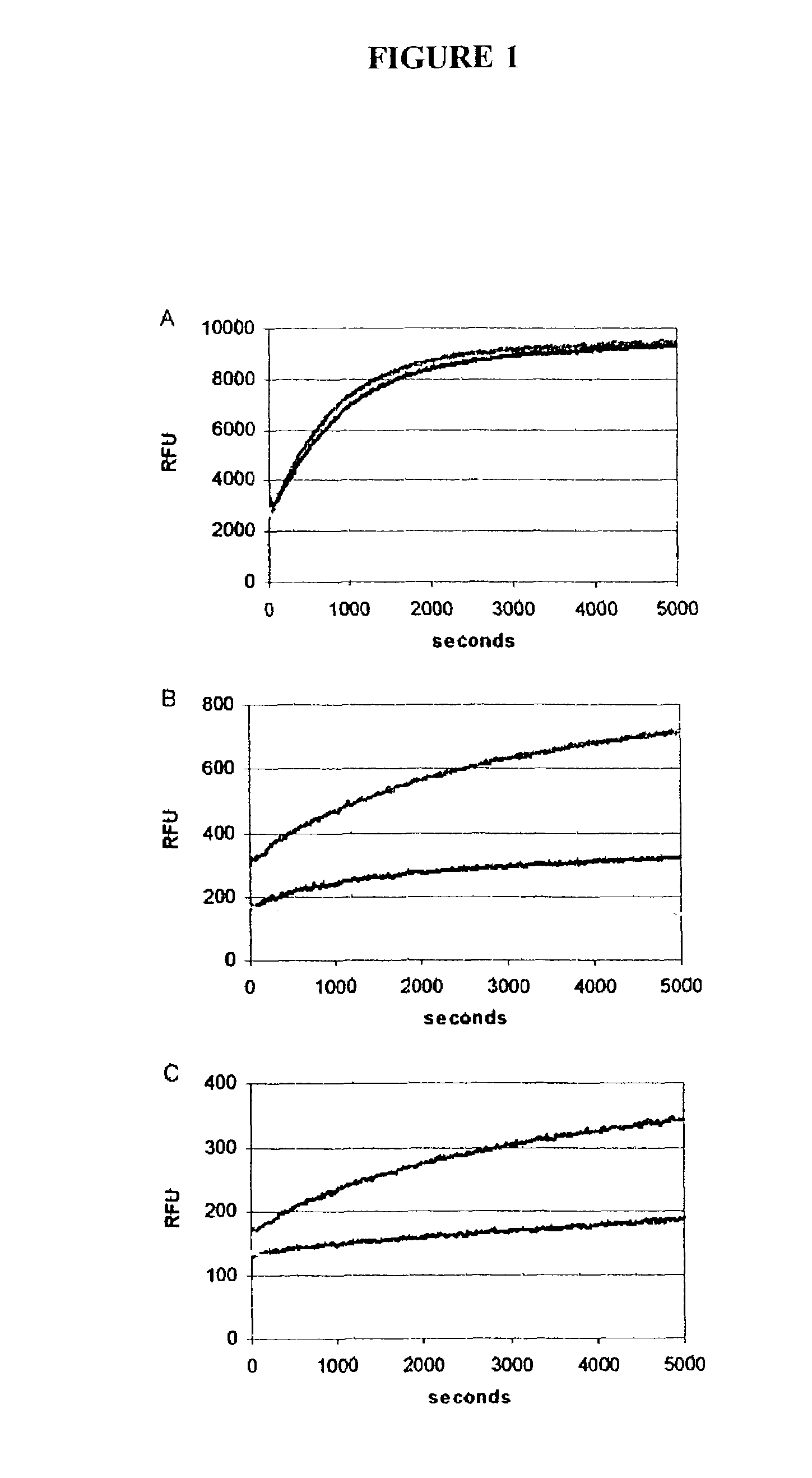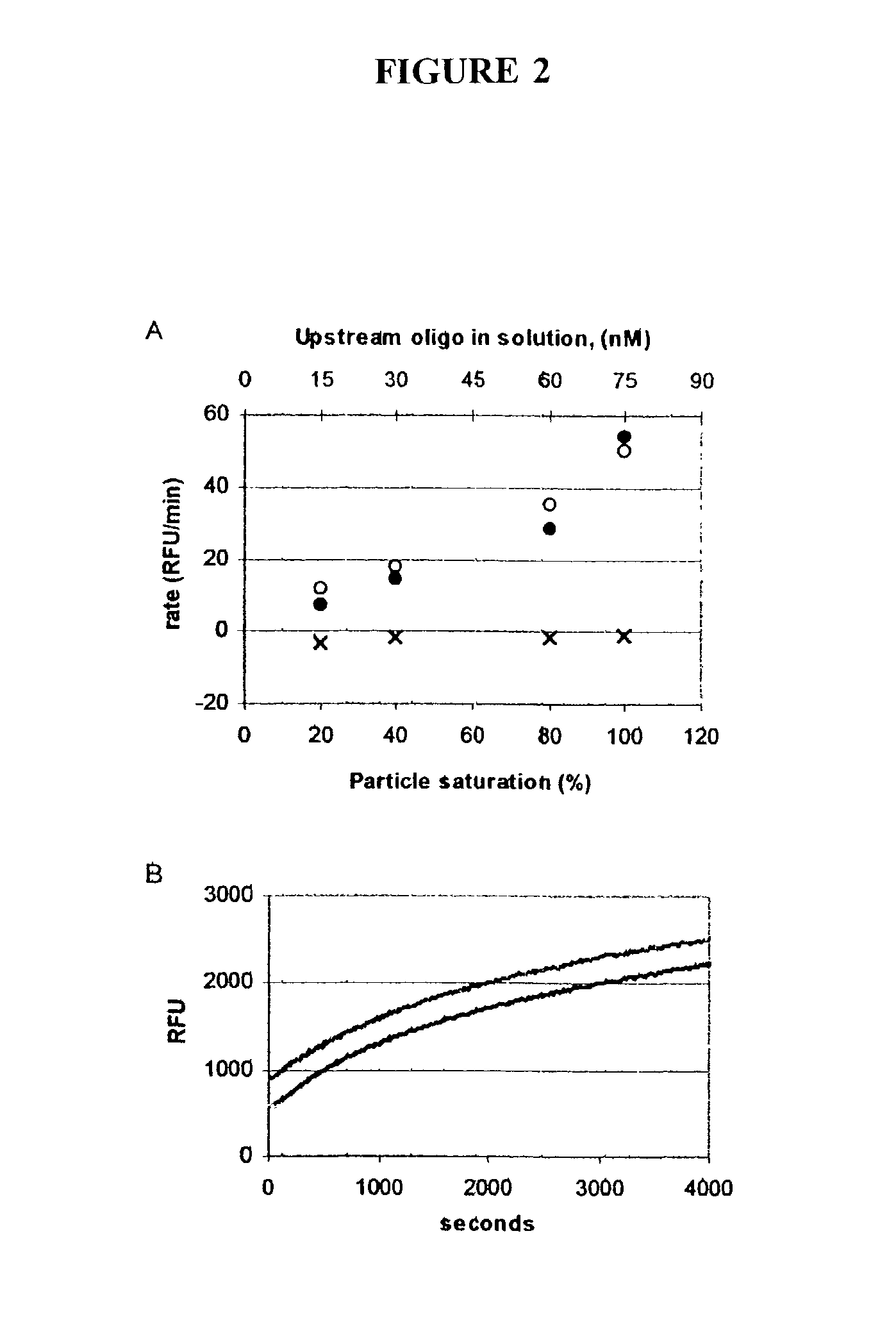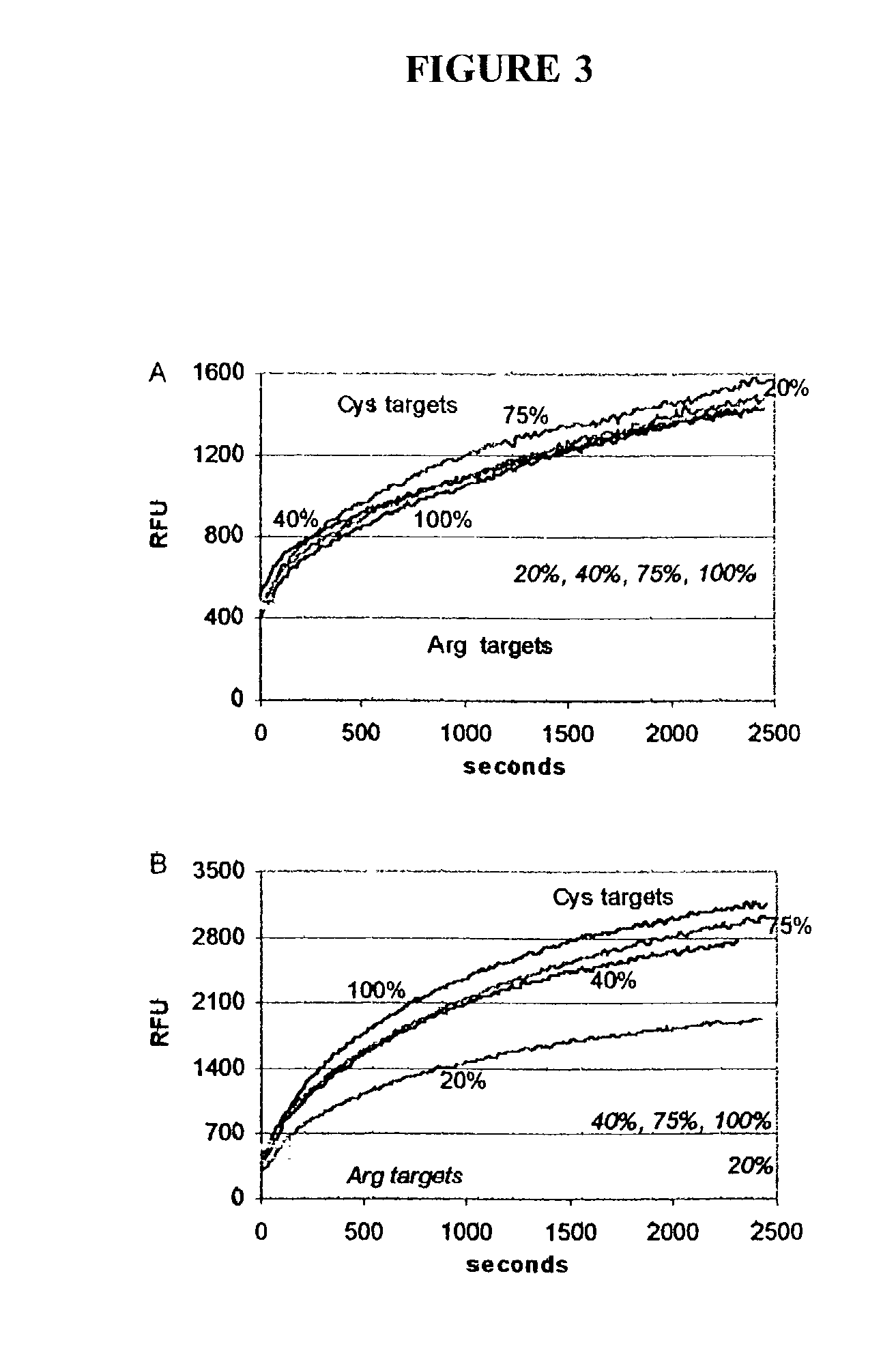Solid-phase reactions
a solid-phase reaction and nucleic acid technology, applied in the field of detection and characterization of nucleic acid sequences, can solve the problem that single-base differences are often difficult to uncover
- Summary
- Abstract
- Description
- Claims
- Application Information
AI Technical Summary
Benefits of technology
Problems solved by technology
Method used
Image
Examples
example 1
Model System Invasive Reaction Functions in Three Solid-phase Configurations
[0247]For a functional solid phase invasive cleavage reaction, a three-component substrate consisting of target annealed to upstream oligonucleotide and probe is assembled on the surface. Additionally, an enzyme recognizes this substrate and forms a productive enzyme-substrate complex.
[0248]An indication that this complicated series of associations occurs on a solid phase came when the invasive cleavage reaction was tested in a format where the model-system target strand and probe were present in solution while the model-system upstream oligonucleotide was bound to microparticles. In this format, reaction kinetics for particle-based cleavage were virtually identical to those of a solution-phase reaction containing the same amounts of each oligonucleotide. In control reactions, where target oligonucleotide was omitted from the reaction mixture, no probe cleavage occurred. Data for these experiments is shown i...
example 2
Higher Concentrations of Solid-phase Probe Oligonucleotide Increase Reaction Rates
[0250]Particles coated with model-system probe at surface densities of 20%, 40%, 80%, and 100% of the bead's maximal oligonucleotide capacity were tested in invasive cleavage reactions. The initial rates of these particle-based reactions increased with surface density of the probe oligonucleotide and were very similar to initial rates of solution-phase reactions containing equivalent amounts of each oligonucleotide. Data for these experiments is shown in FIG. 2A. Reactions were conducted with 50 nM upstream oligonucleotide and 100 pM target (filled circles) or no target (shown with an X). Each solution-phase reaction (open circles) contained 50 nM upstream oligonucleotide, 100 pM target, and an amount of probe equivalent to that in the corresponding particle-based reaction. The lower horizontal axis is for particle-based data; the upper axis is for the solution phase data. Initial reaction rates were c...
example 3
Fluorophore and Quencher can be Reversed in Solid-phase Reaction
[0252]Experiments with the model system demonstrated that the invasive cleavage reaction successfully adapted to a solid-phase format. Productive tripartite substrate molecules were assembled on the particle surface, and enzyme cleavage resulted in signal amplification. In the model system the fluorescein molecule was released from the particle surface and detected in solution, so that assay configuration would be difficult to adapt to solid-phase applications requiring signals at addressable locations. Therefore, a second oligonucleotide system was investigated based on the ApoE 158 SNP. In the second system the positions of the fluorophore and quenching molecules on the probe were reversed. The dabcyl quencher was positioned at the 5′ end of the ApoE probe, while the fluoresceinated nucleotide was at the fifth position as shown in Table 1.
[0253]
TABLE 2Initial slope, 0-2 min (RFU / min)Ratio ofSlope, 10-30 min (RFU / min)l...
PUM
| Property | Measurement | Unit |
|---|---|---|
| temperature | aaaaa | aaaaa |
| temperatures | aaaaa | aaaaa |
| volume | aaaaa | aaaaa |
Abstract
Description
Claims
Application Information
 Login to View More
Login to View More - R&D
- Intellectual Property
- Life Sciences
- Materials
- Tech Scout
- Unparalleled Data Quality
- Higher Quality Content
- 60% Fewer Hallucinations
Browse by: Latest US Patents, China's latest patents, Technical Efficacy Thesaurus, Application Domain, Technology Topic, Popular Technical Reports.
© 2025 PatSnap. All rights reserved.Legal|Privacy policy|Modern Slavery Act Transparency Statement|Sitemap|About US| Contact US: help@patsnap.com



